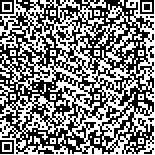陈思远,古祺,吴少璞,等.低频经颅磁刺激联合康复训练治疗帕金森病患者脊柱姿势异常的疗效观察[J].中华物理医学与康复杂志,2025,47(1):36-40
扫码阅读全文

|
| 低频经颅磁刺激联合康复训练治疗帕金森病患者脊柱姿势异常的疗效观察 |
|
| |
| DOI:10.3760/cma.j.cn421666-20240819-00671 |
| 中文关键词: 帕金森病 躯干姿势异常 比萨综合征 经颅磁刺激 |
| 英文关键词: Parkinson′s disease Posture Pisa syndrome Repetitive transcranial magnetic stimulation |
| 基金项目:河南省中医药科学研究专项课题(2024ZY2133) |
|
| 摘要点击次数: 2571 |
| 全文下载次数: 2584 |
| 中文摘要: |
| 目的 观察低频重复经颅磁刺激(rTMS)联合康复训练治疗帕金森病(PD)患者脊柱姿势异常的疗效。 方法 采用随机数字表法将40例PD伴比萨综合征(PS)患者分为观察组及对照组,每组20例。2组患者均给予常规药物治疗及康复训练(包括肌力训练及平衡功能训练),观察组患者在此基础上辅以低频rTMS治疗,刺激部位为脊柱侧凸凸侧的初级运动皮质区(M1)。于治疗前、治疗2周后及治疗结束后3周时测量2组患者脊柱侧凸角度,采用“起立-行走”计时测试(TUGT)、Berg平衡量表(BBS)评价患者运动功能及平衡能力情况,采用运动自我效能(ESE)量表、改良Barthel指数(MBI)量表评价患者运动心理状态及日常生活活动(ADL)能力。 结果 治疗后2组患者脊柱侧凸角度、TUGT、BBS、ESE及MBI评分均较治疗前明显改善(P<0.05)。对照组在治疗结束后3周时其脊柱侧凸角度、ESE及MBI评分均恢复至治疗前水平(P>0.05),观察组在治疗结束后3周时其脊柱侧凸角度[(17.8±3.3)°]、TUGT[(11.1±1.4)s]、BBS[(30.9±2.1)分]、ESE[(43.5±3.3)分]和MBI评分[(57.0±5.9)分]仍较治疗前及同期对照组明显改善(P<0.05)。 结论 低频rTMS联合康复训练可显著减小PD患者脊柱侧凸角度,提高患者运动功能及平衡能力,改善患者运动信心及ADL能力,且疗效持续时间较长,该联合疗法值得临床推广、应用。 |
| 英文摘要: |
| Objective To observe any effect of supplementing rehabilitation training with low-frequency repetitive transcranial magnetic stimulation (rTMS) on the abnormal spine posture of Parkinson′s disease (PD) patients. Methods A total 40 PD patients with Pisa syndrome (PS) were randomly divided into an observation group and a control group, each of 20. Both groups received conventional drug therapy and rehabilitation training (including myodynamia training and balance function training), while the observation group was additionally provided with low-frequency rTMS of the primary motor cortical area (M1) on the convex side of the scoliosis. Before the treatment and after 2 and 3 weeks, the scoliosis angle was measured, and motor functioning and balance were evaluated using the timed up and go test (TUGT) and the Berg balance scale (BBS). The subjects′ mental state was quantified using the exercise self-efficacy (ESE) scale, and the modified Barthel Index (MBI) was used to quantify their ability in the activities of daily life. Results After the treatment, significant improvement was observed in the average scoliosis angles, TUGT, BBS, ESE and MBI scores of both groups compared to the pre-treatment levels. In the control group, all of the indicators had returned to their pre-treatment levels 3 weeks after treatment, but in the observation group they remained significantly improved. Conclusions Low-frequency rTMS combined with rehabilitation training can significantly reduce the scoliosis angle of PD patients, improve their motor functioning and balance, increase their exercise confidence and improve their ability in the activities of daily living over the long term. The combination is worth applying and promoting in clinical practice. |
|
查看全文
查看/发表评论 下载PDF阅读器 |
| 关闭 |